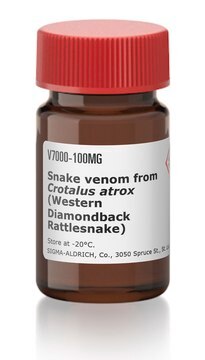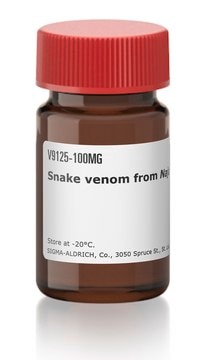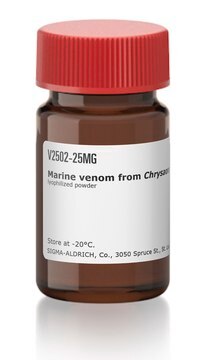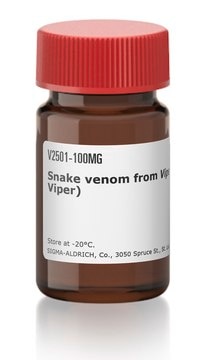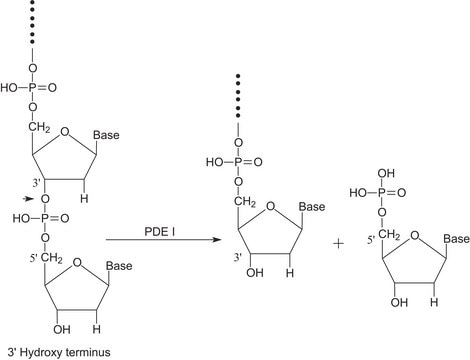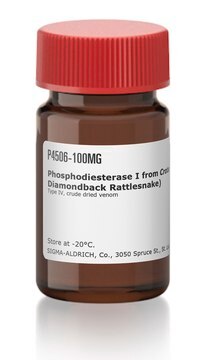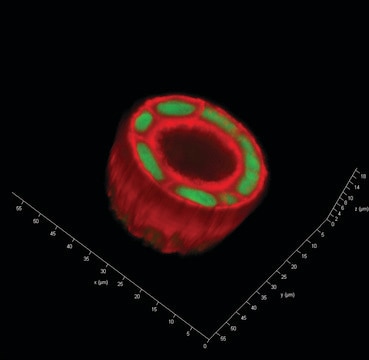V5625
Snake venom from Bothrops jararaca
Synonym(s):
South American Pit Viper
Sign Into View Organizational & Contract Pricing
All Photos(1)
About This Item
UNSPSC Code:
12352200
NACRES:
NA.77
Recommended Products
Biochem/physiol Actions
Snake venom from Bothrops jararaca mainly contains three types of toxins snake venom metalloproteinases (SVMP), snake venom serine proteases (SVSP), and C-type lectin-like proteins (CTLP). These toxins aids in the pathogenesis of envenomation by activating blood coagulation prothrombin, von Willebrand factor (VWF), and factor X, and by altering the function of protein C, kininogen, and blood platelets.
Storage Class
11 - Combustible Solids
wgk_germany
WGK 3
flash_point_f
Not applicable
flash_point_c
Not applicable
ppe
Eyeshields, Gloves, type N95 (US)
Certificates of Analysis (COA)
Search for Certificates of Analysis (COA) by entering the products Lot/Batch Number. Lot and Batch Numbers can be found on a product’s label following the words ‘Lot’ or ‘Batch’.
Already Own This Product?
Find documentation for the products that you have recently purchased in the Document Library.
Aqueous leaf extract of Jatropha mollissima (Pohl) Bail decreases local effects induced by bothropic venom
Gomes Jacyra Antunes dos S, et al.
BioMed Research International, 2016, e0160638-e0160638 (2016)
Glutamate receptor interacting protein 1 mediates platelet adhesion and thrombus formation
Modjeski KL, et al.
PLoS ONE, 11(9), e0160638-e0160638 (2016)
K M Brinkhous et al.
Proceedings of the National Academy of Sciences of the United States of America, 80(5), 1463-1466 (1983-03-01)
Botrocetin, originally called venom coagglutinin, is a Bothrops factor that causes aggregation of blood platelets in the presence of the von Willebrand component of the factor VIII macromolecular complex. The complex consists of a series of multimers with a molecular
Inhibitory Effects of Hydroethanolic Leaf Extracts of Kalanchoe brasiliensis and Kalanchoe pinnata (Crassulaceae) against Local Effects Induced by Bothrops jararaca Snake Venom
Fernandes JM, et al.
PLoS ONE, 11(12), e0168658-e0168658 (2016)
Júlia Morais Fernandes et al.
PloS one, 11(12), e0168658-e0168658 (2016-12-30)
The species Kalanchoe brasiliensis and Kalanchoe pinnata, both known popularly as "Saião," are used interchangeably in traditional medicine for their antiophidic properties. Studies evaluating the anti-venom activity of these species are scarce. This study aims to characterize the chemical constituents
Our team of scientists has experience in all areas of research including Life Science, Material Science, Chemical Synthesis, Chromatography, Analytical and many others.
Contact Technical Service